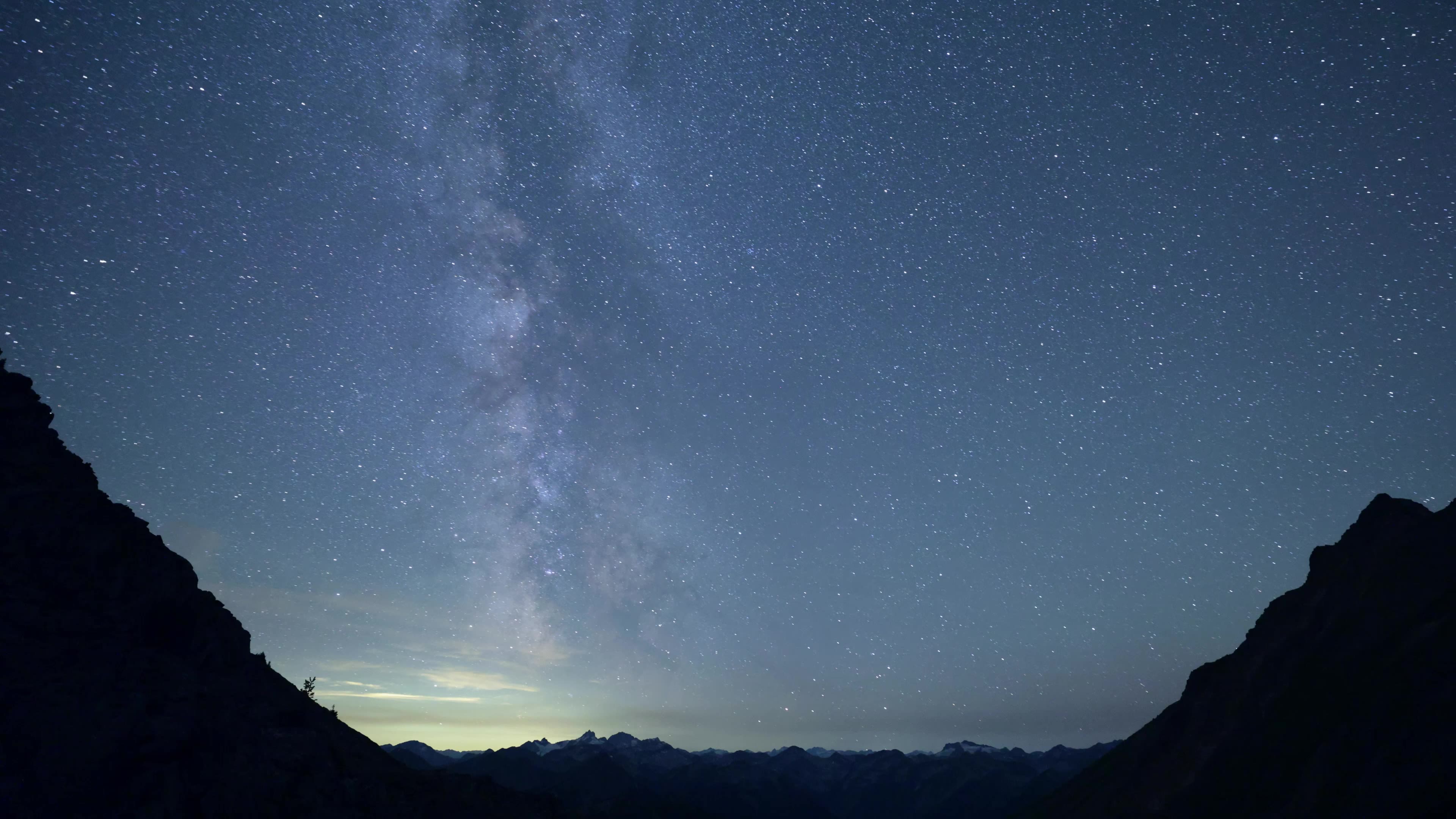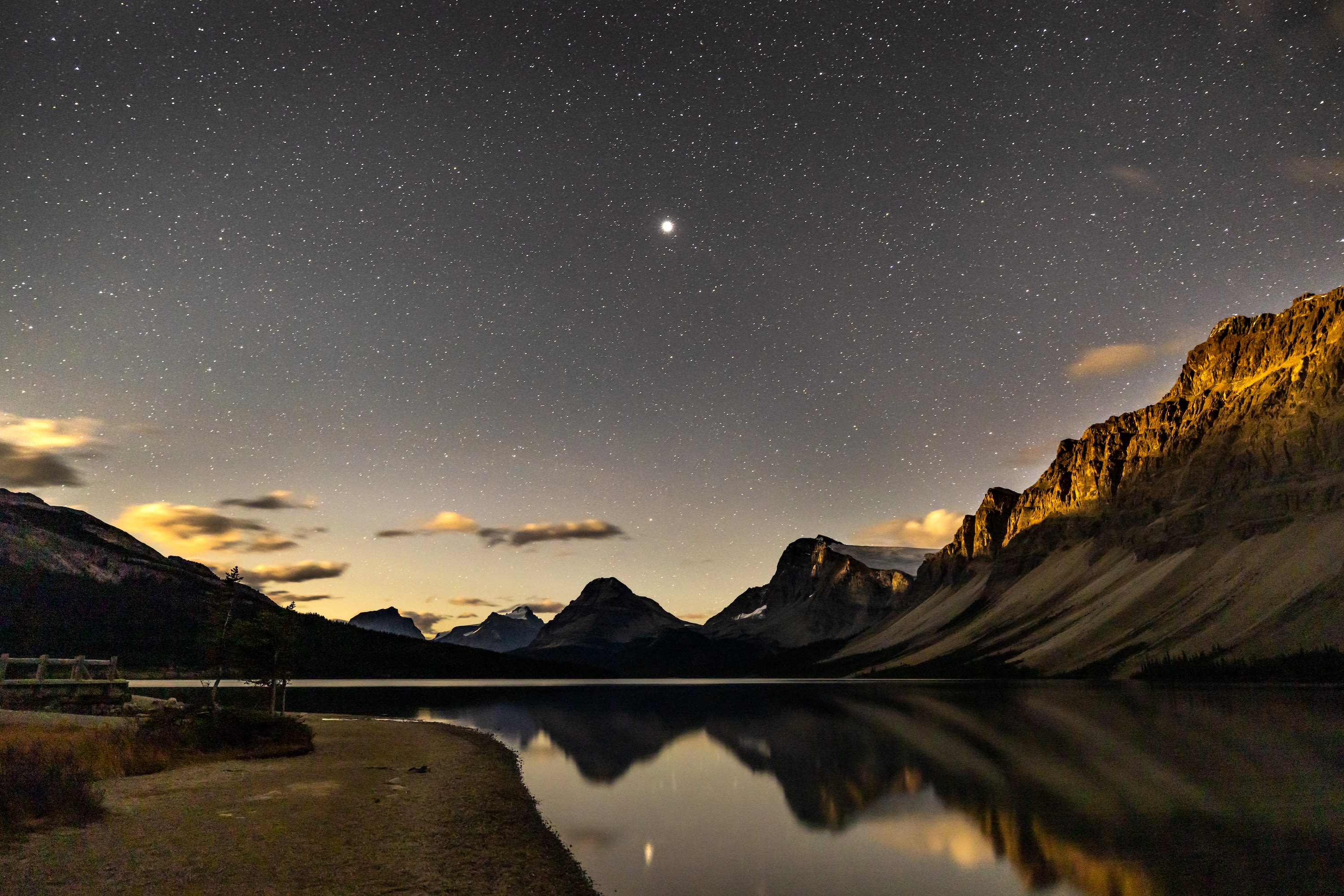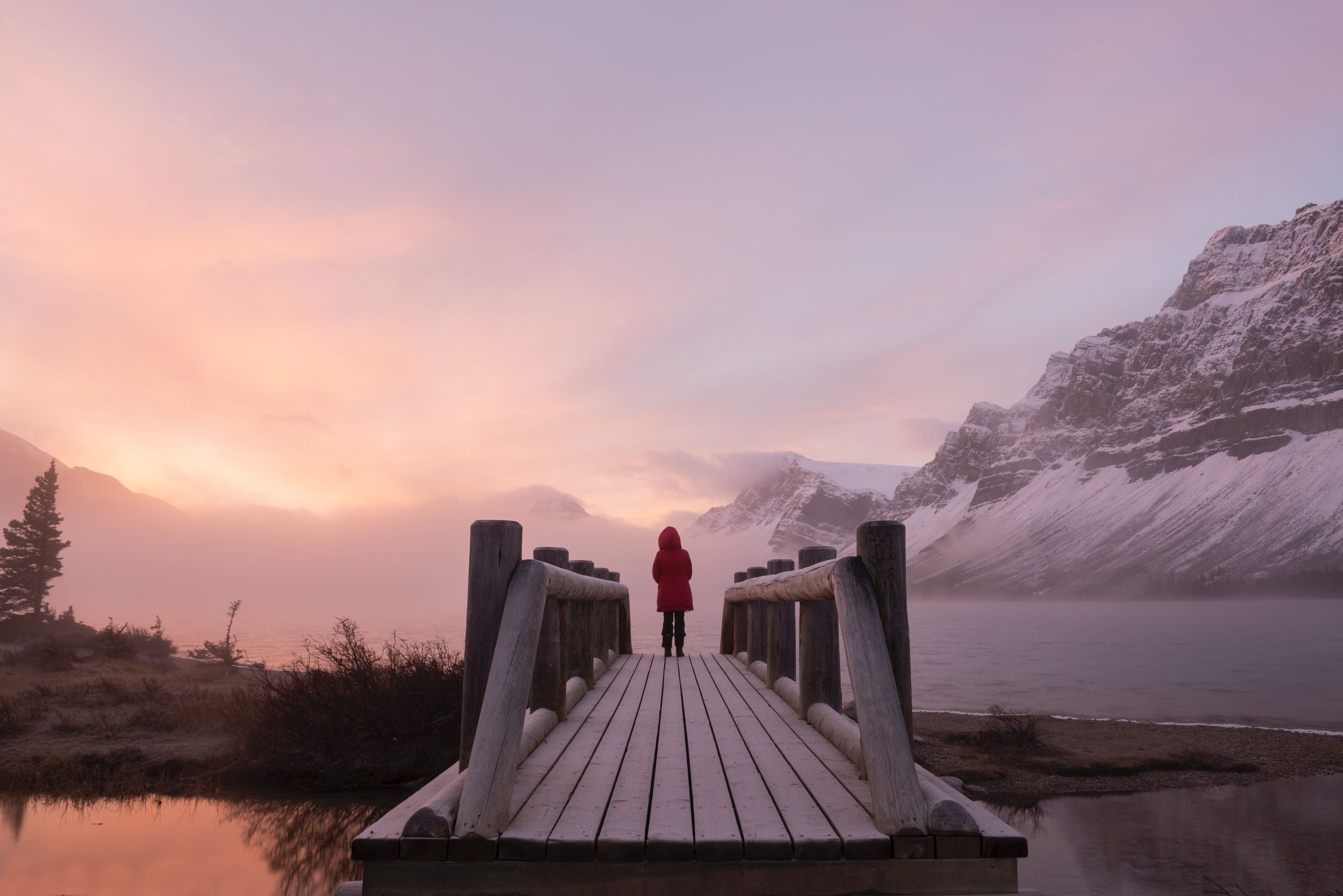Tales From The Dark




⥣
In the vast northern skies, a cosmic dance unfolds each night, painting a canvas of stars, planets, constellations, and the Aurora Borealis. These celestial wonders have long served as a muse for storytellers, artists, and visionaries, inspiring generations to interpret the mysteries above.
For centuries, people have gazed upwards to make their way in the world. The skies are our compass, our clock, our weather predictor.
But with more and more people living in urban centres full of light pollution, we are losing that connection. Seeing the night sky is becoming a luxury. Luckily Canada is one of the best places in the world to experience a dark sky and see all the wonder contained within its inky depths.
Even for those of us who live in urban centres, we are never too far from a location free of artificial light. And there are people working hard to create a network of darkness to benefit not just humans but also the flora and fauna who share our view of the cosmos.
⇓
From gazing at the Milky Way to chasing the Aurora Borealis, travelling to places with light-free skies is becoming increasingly popular. But of course we don't want to go just for the view — we also want to make a connection to the people and the place. And the best way to do that is through storytelling.
⇓
Tales From The Dark
Reconnecting with our night skies
By Izabela Jaroszynski


Growing up in rural New Brunswick, Stéphane Picard had easy and consistent access to a dark sky just outside his front door.
"You appreciate it, but you take it for granted a little bit," he said. Those years of stargazing sparked a lifelong love of astronomy and eventually led him down a path to being a proficient astronomer and astrophotographer. It is an expensive hobby, he said.
But with his kids now grown, Stéphane realized that with the equipment he had, he could provide stargazing events and private star parties to other people. And so Cliff Valley Astronomy was born.
Photo: Stéphane Picard
Photo: Stéphane Picard
"I remember when I launched the business in 2022, I did a free public viewing here at our town hall in my hometown. Just the moon, nothing fancy," he said. "It was a good turnout, quite busy. Everyone goes up to the telescope and you get an immediate reaction like 'Wow, that's nice' and you talk a little bit.
And there was this gentleman who came up to the telescope. Ten seconds, 40 seconds, and he's not saying a word, just looking. I walked around just to see if he had any questions because I kind of felt something was unusual a little bit and I saw that he was tearing up. 'Are you ok sir?' I asked him and he said, 'I've been on this planet for 60-some years and I've never seen the moon like this.'"
Since then, Stéphane has had numerous examples of people making a real, genuine connection with the cosmos — sometimes even getting overwhelmed by the intensity of the experience.
"We've lost our intimacy with the night sky and I'm trying to bring it back," he said. "There's is so much value in creating those types of memories and experiences."
And he wants people to remember that you can make a deep connection with the night sky even without any equipment.
"Watching a meteor shower by a campfire is an experience," he said. "No equipment needed except a comfortable seat and knowing where to look."
Growing up in rural New Brunswick, Stéphane Picard had easy and consistent access to a dark sky just outside his front door.
"You appreciate it, but you take it for granted a little bit," he said. Those years of stargazing sparked a lifelong love of astronomy and eventually led him down a path to being a proficient astronomer and astrophotographer. It is an expensive hobby, he said.
But with his kids now grown, Stéphane realized that with the equipment he had, he could provide stargazing events and private star parties to other people. And so Cliff Valley Astronomy was born.
Photo: Stéphane Picard
Photo: Stéphane Picard
"I remember when I launched the business in 2022, I did a free public viewing here at our town hall in my hometown. Just the moon, nothing fancy," he said. "It was a good turnout, quite busy. Everyone goes up to the telescope and you get an immediate reaction like 'Wow, that's nice' and you talk a little bit.
And there was this gentleman who came up to the telescope. Ten seconds, 40 seconds, and he's not saying a word, just looking. I walked around just to see if he had any questions because I kind of felt something was unusual a little bit and I saw that he was tearing up. 'Are you ok sir?' I asked him and he said, 'I've been on this planet for 60-some years and I've never seen the moon like this.'"
Since then, Stéphane has had numerous examples of people making a real, genuine connection with the cosmos — sometimes even getting overwhelmed by the intensity of the experience.
"We've lost our intimacy with the night sky and I'm trying to bring it back," he said. "There's is so much value in creating those types of memories and experiences."
And he wants people to remember that you can make a deep connection with the night sky even without any equipment.
"Watching a meteor shower by a campfire is an experience," he said. "No equipment needed except a comfortable seat and knowing where to look."

4,500 km to the west of New Brunswick, Lillyrose Meyers is also working to reconnect people with the night sky.
Born and raised on a traditional Métis farm north of High Prairie Alberta, Lillyrose now resides in Buffalo Lake Métis settlement and shares her Indigenous stories and experiences as a Knowledge Keeper and Teacher at Métis Crossing.
"Storytelling is not new. It has been around from the beginning. Our ancestors told us stories from the past — and I'm talking thousands and thousands of years ago. They didn't have means of writing but they left pictures on the wall. That to me is storytelling, that's a message from the past," she says. "Here we are thousands of years into their future and they're telling us a story and sharing it through a picture on the wall."
That same powerful connection can be felt when we look at the stars, Lillyrose says.
"It's dark outside. Let's look up at the skies and what do we see? We see the same stars they saw, we share the same sky. We are thousands of years apart and yet we're in that same moment. Time has shrunk."
Métis Crossing offers a Whispers From the Stars experience where storytellers like Lillyrose share stories and practices related to the skies around a cozy fireplace before heading outside to gaze up at the cosmos.
Lillyrose makes sure to point out the North Star.
"It's a constant in the sky and so important for everybody. We use it if we're caught in the middle of a desert or the snow-covered north, it's the same star. We call it the Coming Home Star," she says. "Our ancestors drew it on the wall thousands of years ago and all through time they've studied it and the moon and know how it plays a role in our lives."
Related: Read more about Métis Crossing

"We've lost our intimacy with the night sky and I'm trying to bring it back."

Stories passed down from generations have helped humans relate to the night sky. In Canada's far north, where the dark takes over for much of the winter, those stories have worked to keep people safe and entertained for millennia.
Paul and Bree Josie operate Josie's Old Crow Adventures in the far northeast corner of the Yukon.
"In Old Crow, the sun does not come over the horizon from December 6 to January 6," Bree says. "So we spend a lot of time in the dark in the winter. But, this doesn’t mean it’s 24 hours of darkness. We have hours of twilight and see reds and purples of sunsets and sunrises."
And then, of course, there are the Northern Lights.
Photo by Paul Josie
Photo by Paul Josie
Paul, who was born and raised in Old Crow, says that his people, the Vuntut Gwich'in, have a legend that is told to children about the power of the Aurora Borealis.
"In the Gwich’in language, the Northern Lights are called the yahkaii," says Paul. "The Northern Lights are an incredible sight to see, but also there is a sense of fear. As children, the elders tell us never to whistle at the Northern Lights. The fear is that the spirits in the lights will hear your whistles and come for you. The whistling makes the lights move and dance, but you must run away or rub your fingernails together so that the spirits don’t take you."

"As an Indigenous person, seeing the Northern Lights connects me to those that have passed on to another life."
Joe Bailey offers Aurora tours in the Northwest Territories through his company North Star Adventures. He has witnessed countless people awestruck at the sight of the Northern Lights, some even brought to tears.
On his tours, Joe shares the Dene perspective about the night sky.
"The wonder of Mother Nature at her best. It is such an incredible show, to see the night sky light up with vibrant green, pink and red Auroras. Every night is different," Joe said.
"The most special is when a close friend or relative has just recently passed and then I see the Aurora dancing as happy as can be or moving so fast, and for that moment I am with that person again."
Written with notes from Athena Tsavliris
Another popular Gwich'in legend related to the night sky is called the Boy in the Moon, Bree Josie says.
"Basically there is a boy born with special powers and this tells the story of how the moon came to look like how it appears over the Gwich'in homelands," Bree says.
Watch an adaptation of the Gwich'in traditional story below, created by (then 13-year-old) Ciara Kakfwi-Frost in 2018:
Related: Read more about Old Crow and the Josie family
Weaving Indigenous stories and knowledge into our understanding of the night creates more layers of connection, Stéphane says. In New Brunswick, he has been working with local Indigenous Nations to bring some of those stories to the youth.
2024 presented a great opportunity because of the Solar Eclipse and the fact that New Brunswick was on the path of totality.
"The Woodstock First Nation in central New Brunswick had gone almost a thousand years since the last total eclipse in that part of the province. They had such a hard time unearthing the ceremonies, the songs, the dances," he said. "When it finally was able to be revived, well, I'm a passionate person and I've got to say, I got choked up at times."

"We are thousands of years apart and yet we're in that same moment. Time has shrunk."

Travelling to reconnect with the night sky — or astrotourism as it is known — is growing in popularity among a population that can no longer see a clear sky from their hometowns due to the intensity of the light pollution.
Dark Sky Preserves and sanctuaries aim to create a network of places working to keep the night dark. In addition, national, territorial and provincial parks (some of which have earned a Dark Sky designation) are also great options for people looking to get away from the light.
Algonquin Park. Photo: Destination Ontario
Algonquin Park. Photo: Destination Ontario
Christine Luckasavitch, the owner of Waaseyaa Cultural Tours, runs a popular Full Moon Walk in Ontario's Algonquin Provincial Park during which she shares about her Madaoueskarini Algonquin heritage and also teaches people to be comfortable outdoors at night.
"We’re kind of scared to go outside at night, right? And especially when you’re in the quote-unquote 'wilderness' there’s all these seemingly spooky, scary things out there," Christine says. "But having spent so much time outside at night, full moon or not, it’s not so scary."
In order for us to want to save nature, we have to know it and the same goes for the night sky — in order to prioritize darkness over artificial light pollution, we have to be comfortable in the dark.
"This land will still hold you, even at night, when it seems scary. There's such a different type of beauty seeing a forest at night, seeing the lake at night," she said. "There's something magic about being outside on a full moon night. You see the world in a different way and know that you belong there too."
Related: Learn more about Algonquin Park
Stéphane agrees that connecting to the night sky changes our perspective and he has seen it happen over and over with his star parties.
"I find astronomers have a way of looking at things a little differently because we see the vastness of the universe," he said. "We see the beauty of stuff that most people don't understand and we understand a little bit better our place in this vast cosmos that has perpetually no end to it."
Ready to reconnect with the night sky?
Below, we offer a map of 13 Dark Sky Preserves in Canada, all of which would make an incredible destination for your next astro-adventure.
When deciding where to go, consider:
- The darkness of the location. The Royal Astronomical Society of Canada is a great resource.
- The geological features of the location. Do you want mountains as the background? Maybe choose Alberta. Ocean? Visit Stéphane in New Brunswick or head to one of the wilderness lodges in British Columbia. Out-of-this-world scenery? Try Saskatchewan's Grassland National Park and stay at the Crossing at Grasslands.
- The type of Astro event you'd like to see. For the Aurora Borealis, for example, the Yukon, the Northwest Territories and Churchill in Northern Manitoba are all great destinations.
Northern BC Tourism/Ryan Dickie
Northern BC Tourism/Ryan Dickie

Embrace Canada with Landsby
Landsby creates unique and immersive experiences that not only provide travellers with purposeful and enriching trips but aim to positively impact the communities being explored.





